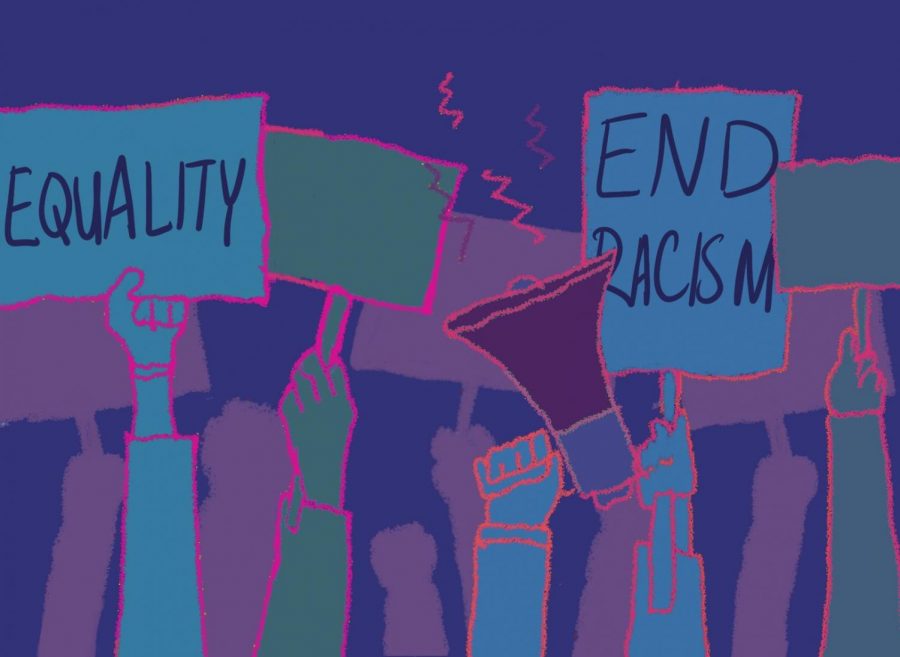Racism as a public health crisis calls for proactive action
October 29, 2021
In a landmark resolution released on Oct. 18, the New York City Board of Health declared racism a public health crisis and highlighted the necessity of working toward a “racially just recovery” from the COVID-19 pandemic across the political and socioeconomic board.
Trends like this aren’t new, which is is more of a reason why such a progressive resolution is long overdue.
The resolution, whose action items were prefaced by a series of acknowledgments concerning the harmful and lasting impacts of systemic racism, urged that the department collaborates with other agencies to eradicate systemic racism through policies, plans and budgets on an array of matters. Prioritized among those matters were mental and physical health, education, land usage and transportation.
In addition, the department was instructed to improve data collection concerning fatalities, injuries and health conditions, and organize such data by race, gender and other demographics.
“To build a healthier New York City, we must confront racism as a public health crisis,” Health Commissioner Dr. Dave Chokshi said.
Chokshi also noted that the underlying health conditions that have made non-whites far more prone to developing and dying from COVID-19 are a result of “disinvestment, discrimination, and disinformation,” a reality that has long crippled communities of color.
The data does not lie—New Yorkers of color “have continued to suffer disproportionately from COVID–19 and other health calamities.”
City data found that Black and Hispanic New Yorkers are particularly susceptible to fatalities resulting from COVID-19, with Black New Yorkers also having the lowest rate of vaccinations across the entire state.
Data like this isn’t new, which is all the more reason why such a progressive resolution is long overdue.
While this resolution is an admirable step toward a more racially just future, being that it is the first to tie itself to specific directives such as establishing a Data for Equity working group, it is just that: a step.
What the department must focus on now is enacting change rather than simply acknowledging it.
This point was underscored by Dr. Michelle Morse, chief medical officer and a deputy commissioner at the Health Department, who stated that while the resolution is “a hopeful milestone,” it is merely a small part of a much larger puzzle, according to The New York Times.
The coming months are crucial to affirm the plausibility of this resolution, for in a culture dominated by empty promises and judicial inaction, it is easy for such a resolution to lose momentum. The work has just begun.
“Now the most important thing is to see its [the resolution’s] implementation, to see the investment, and to see the changes that are going to come,” Dr. Kitaw Demissie, dean of the School of Public Health at SUNY Downstate Health Sciences University in Brooklyn, said.
This is not to say that the resolution is merely another empty promise. It is a requisite step toward revitalizing the health system for communities of color, starting at the most fundamental levels of daily life.
The Health Department’s policies must thus start at society’s core: education.
Educating students, doctors, lawyers, policymakers and government officials about how deep-rooted system racism is in the United States and outlining, with improved data, in what specific ways it harms communities of color, is the first definitive step that must be taken.
Implementing such studies as critical race theory into the public education curriculum and providing mandatory sensitivity training across all sectors of employment will accomplish the Health Department’s goal of eradicating the racial inequities and health disparities prevalent across the board, though it will certainly take years to accomplish.
A necessary part of recovering from the pandemic is directly correlated with prioritizing the recovery of our most vulnerable communities, and that means no longer remaining inactive in the face of need.
“COVID-19 was like a magnifying glass for us to see what has already been in existence for a long time,” Demissie.








